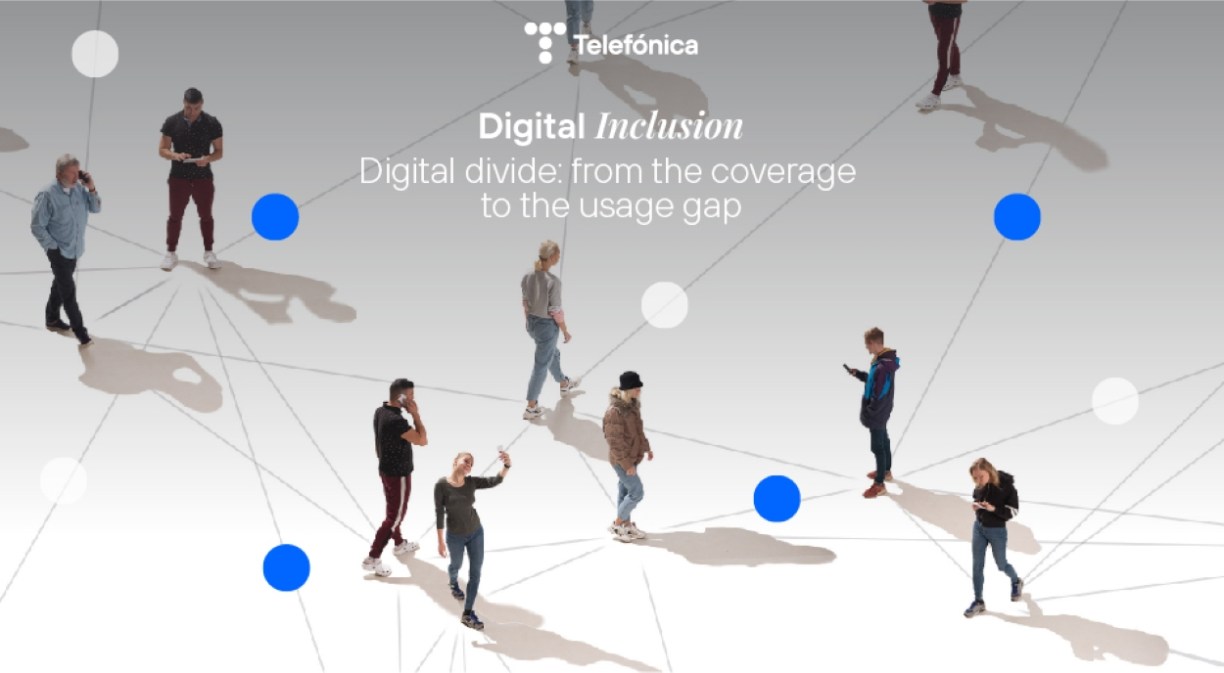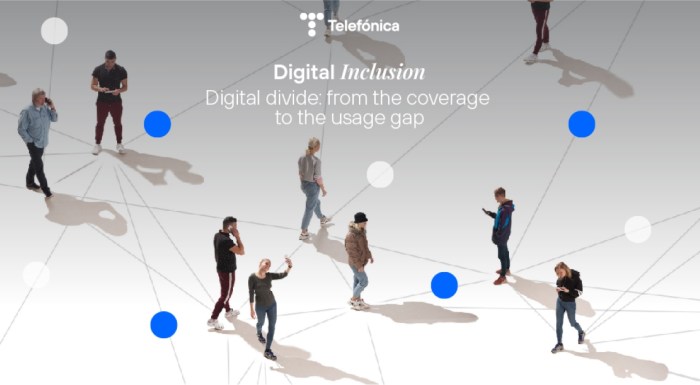Connectivity is a fundamental pillar for driving the digital transformation of society and the economy. For this reason, it has traditionally been argued that the digital divide is primarily an issue of access. As a result, public policy has focused on accelerating the deployment of efficient, resilient and sustainable telecommunications infrastructure to ensure that no one is left behind by the digital revolution. However, time has shown that this was only part of the problem.
The coverage gap has narrowed significantly in recent years. According to the GSMA, by 2022 the coverage gap will be 6% in Latin America and the Caribbean, and 2% in Europe and Central Asia. However, there are still people who do not use this connectivity, limiting their participation in the digital world. In the same regions, the usage gap is 32% and 19% respectively. This tells us that where Internet access is available, there are other barriers to full digital inclusion that have not been given due attention.
A paradigm shift has indeed taken place. It is therefore necessary to rethink eInclusion policies and initiatives in order to adequately address this challenge, targeting both the coverage gap and the usage gap. To this end, we have developed a new position paper in which we explore the causes of both gaps and propose a number of innovative strategies to address them. We also present the first output of our Digital Inclusion Compass.
Building the Compass for Digital Inclusion: towards closing the coverage gap and the usage gap
The Digital Inclusion Compass aims to guide public and private actions to contribute to closing the digital gap from a new perspective adapted to today’s challenges. The first two cardinal points presented in this Compass are closing the coverage gap and closing the usage gap. It also identifies the main areas of action for both gaps in order to tackle the root causes of these problems.
Towards closing the coverage gap
The cardinal point of the coverage gap presents three areas of action:
- Fostering models of alliances and public-private cooperation. Telefónica has been innovating its business model for years to accelerate the deployment of digital infrastructure through alliance systems. The experience of these years has proven to be positive, as alliances have been a key element in the expansion of coverage in the countries where it operates. We therefore believe that public policies should actively promote infrastructure sharing agreements and partnerships, and support new projects that are technologically innovative and have social benefits.
- Innovation in network financing mechanisms. To achieve connectivity goals, Europe and Latin America face a large investment gap. Telecom operators and public policy makers need to explore new or redesign existing formulas to facilitate network financing.
- Move towards simpler and more flexible regulation. The telecommunications sector is over-regulated, which is an obstacle to network deployment. It is imperative to further reduce the costs associated with network deployment, to remove barriers to infrastructure sharing and to ensure adequate amounts, prices and conditions for spectrum.
Towards closing the usage gap
The cardinal point of the usage gap includes four areas of action:
- Promote public-private cooperation to accelerate digital literacy and digital skills for equal access to the opportunities offered by the digital world. Special attention should be paid to addressing skills gaps, embedding the necessary skills in education systems and promoting lifelong learning to enhance employability.
- Ensure affordability of devices and access. In order to ensure that all people to have the basic digital tools to operate in the digital age, it is necessary to establish mechanisms that facilitate the accessibility of internet access service and affordability of devices. Reducing fees and promoting subsidies could be two solutions that could contribute to digital adoption, especially for people in vulnerable situations.
- Promote the development of relevant content and services accessible to all. It is crucial to encourage the creation of local content and services adapted to the country’s culture, as well as to ensure their accessibility in order to favour the inclusion of people with disabilities in the digital age.
- Promote a responsible and trustworthy governance model. In the process of digitalisation, society must have a governance model based on fundamental rights, privacy and security of individuals.
This Digital Inclusion Compass is intended to be a guide to action for all stakeholders, with the aim of reducing usage gaps and connecting the unconnected, ultimately extending the benefits of digitisation to all.

